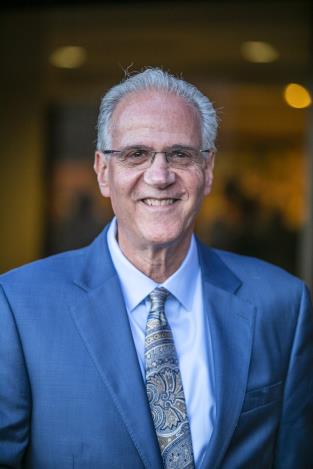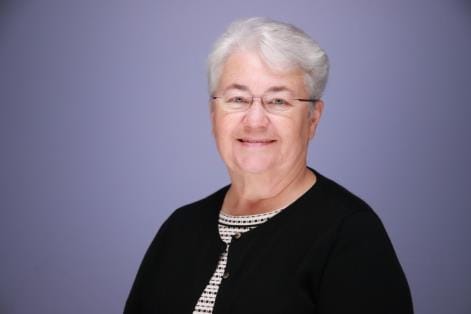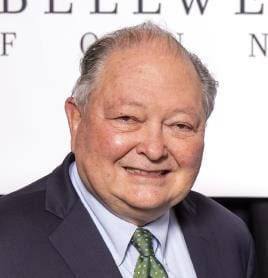 Threats to healthcare supply chain communications, operations, teamwork
Threats to healthcare supply chain communications, operations, teamwork
What might be classified as saboteurs to success is more familiar than you think
By Rick Dana Barlow
Even before technology could be used to sabotage something in the workplace, attitudes and personalities typically served as an instigator — if not the root cause.
Today, much of that can be amplified through technology.
Some generally attribute problems to crossed and mixed signals, often nothing more than "innocent" negligence or oversight — from the leadership to the trenches.

"One of the biggest threats to communication and teamwork in any supply chain organization is misalignment — when purpose and actions don't match up, when teams are running in different directions, or when leaders lose touch with what's really happening on the frontlines," said Tina Vatanka Murphy, President and CEO, GHX, a Platinum Sustaining and Educational Sponsor of Bellwether League Foundation (BLF) and the Healthcare Supply Chain Leadership Hall of Fame (HSCLHOF). "In healthcare especially, with all its complexity and pressure, it's easy to fall into fire-fighting mode — chasing problems, managing disruptions and checking boxes without pausing to ask: 'Are we solving the right problems?' 'Are we still connected to our purpose?'
"Another quiet threat is fear — fear of speaking up, of making mistakes, of taking the bold steps that might just be what's needed most. And when people don't feel safe raising the hard stuff or challenging the status quo, that silence creates blind spots. It slows innovation and distances leadership from reality on the ground," Murphy continued.
"Courageous leadership means creating a culture where respectful candor isn't just allowed — it's expected. At GHX, we work hard to close those gaps. That means open, honest communication. It means building real feedback loops, so frontline voices shape how we operate. And it means always reminding people how their role connects to something bigger: helping improve outcomes for patients," she noted. "In times of great change, it's not just the systems that need to evolve — it's how we think and lead. And that starts with leaders who are willing to listen, to take bold action and to lead with humility."

Tom Lubotsky, Bellwether Class of 2022, acknowledges that miscues can occur all too often. "Certainly, communication delays, non-compliance to agreed- upon communication channels and misinformation can all threaten the daily functioning of the supply chain department, especially among the key caregivers we serve," noted Lubotsky, who serves as vice president and Chief Supply Chain Officer, Allina Health, Bronze Sustaining and Educational Sponsor, BLF and HSCLHOF. "Clearly, with all the disruptions that now occur (average across healthcare supply chain now rests at 65 per day), these factors can create the unnecessary pauses in care that need to be preventable. Hence, communication collaboration has never been more essential in running daily supply chain operations.
"To help remedy, we need better integrated systems (e.g., warehouse to ERPs) to bolster the reliability of sound communication," he continued. "Sound high reliability principles such as Stop, Think, Act and Review (STAR) and phonetic repeat backs can also support better communication. Timeliness, however, remains a big barrier to allow key product or service decisions to be made. With all the electronic capabilities to communicate today, I am hopeful that we can continue to improve our daily communications among all."

Many of the challenges can be traced to changes within the function and profession of supply chain management itself, according to Angie Bruns, Future Famers Class of 2024, and senior director, Spend Management and Administration, The University of Kansas Health System.
"Healthcare supply chain is complex, intricate, and is no longer a traditional department," Bruns insisted. "Historically, the supply chain 'link' consisted of traditional business units: Procurement; strategic sourcing, value analysis and distribution and logistics. Today, those business units have expanded their scope and new links have been added to the chain. Supply chain is beyond performing only as a support department; it is a key player in organization-wide fiscal stewardship. Because of this, having a strategic plan in place is foundational to maintaining resiliency throughout supply chain's ever-changing landscape and market volatility. Not having one may lead you down a path that could inadvertently affect patient care."
Bruns points to one overarching premise for supply chain progress as well as the primary culprit for thwarting it.
"The vision is what drives the strategy, ongoing operations, teamwork, and daily communication for our supply chain teams," she observed. "Though we cannot control every input operational input (manufacturer backorders, recalls, patient volume, and census), we can control how we support our teams with resources and tools guided by the strategy. The saboteur to our own success is truly ourselves. As supply chain leaders we are tasked to break down those uncontrolled inputs into our operations and make them digestible and successful. We can do that with the power of a well-laid plan. George Washington Carver says it best, 'Where there is no vision, there is no hope.'"

The speed to lead may, in fact, be a misdeed, based on the observations of Gail Kovacs, Bellwether Class of 2024, and a retired supply chain veteran.
"In a critically and rapidly evolving situation, assumptions and rapid-fire communications may not be fully validated," Kovacs noted. "Actions taken based on preliminary information may be inaccurate, leading to errors and re-work. Layer onto that, the teams' well-intended efforts to address the issues can backfire, discouraging everyone.
"In less pressured situations, care must be exercised to ensure communications are accurate, clearly communicated in a timely manner with all constituents involved with the operations affected by decision making," she continued. "Building trust and relationships among team members during these times will carry you forward during the more pressured, rapidly evolving events. Certainly, the utilization of AI will simultaneously offer opportunities for success, if used wisely, but it will also require vigilance to ensure data generated is monitored for accuracy."

But the problem may extend beyond supply chain leadership well into the C-suite, according to Fred Crans, Bellwether Class of 2020, Outreach Ambassador on the BLF Board of Directors, and business development executive, St. Onge Co., Silver Sustaining Sponsor.
"Failure to include the supply chain leader at the highest strategic level is key," Crans said. "While many supply chain leaders claim to be in the C-suite level, most are not, and decisions affecting the future of both the supply chain and the organization as a whole are often made with zero input from the supply chain leaders."

Corey Schmidt, CMRP, Future Famers Class of 2024, and assistant director, SHS Operations & Spend Management Integration, The University of Kansas Health System, points to three prevalent challenges.
First, people are busy. "There are many types of communications that work for a variety of audiences. Knowing your audience and how people best receive information is key to ensuring that your message is received. Not everyone has time to read emails, especially those who work directly with patients. They may need a different avenue in which to receive important details. Having an assortment of communications platforms is crucial in capturing large audiences," Schmidt advised.
Second, people suffer from change fatigue. "Healthcare facilities undergo constant change, especially in supply chain. However, too much change in one span of time can create discourse among team members, higher stress levels and fatigue. This adversely affects operational efficiencies as too much change can lead to miscommunication of processes, which can cause mistakes to occur, leading to frustration and ultimately higher staff turnover rates," he observed.
Third, people are more specialized. "Larger departments and health systems teams become more specialized requiring more coordination between teams. As health systems and supply chains continue to grow work that used to be done by one or two people now span multiple teams requiring more streamlined communication from project beginning to end to be successful," he added.
Still, while internal challenges may be pervasive, external challenges can level a one-two punch.

"The biggest vulnerability in a successful supply chain department often begins with misaligned goals and a lack of clarity around what truly matters to the organization, and how the team contributes to the broader strategic mission. Without this alignment, efforts become fragmented and ineffective," indicated Tom Redding, executive vice president and healthcare practice leader, St. Onge Co., BLF Silver Sustaining Sponsor.
"Additionally, when there is no accountability for vendor performance, departmental outcomes or individual staff contributions, it fosters a culture where employees feel their work doesn't make a difference. The 'it doesn't matter' mindset undermines engagement and results," he continued. "Finally, leadership that resists change or remains inflexible significantly hinders the department's ability to adapt, innovate and continuously improve, all of which are critical for long-term performance and resilience."

External factors can initiate a drag on progress, according to BLF Chairman Barbara Strain, Bellwether Class of 2021. But they can be a benefit.
"Daily disruptions that come from outside the organization take the rhythm out of operations and do not allow the time to effectively communicate, network or bond. Supply chain leaders who use disruptions to their advantage as learning opportunities become a stronger, highly functional resilient operation," she recommended.

Rand Ballard, Chief Customer Officer, Vizient Inc., BLF Founding and Educational Sustaining Sponsor, points to fiscal pressures and ultimately what emerges from Washington as sobering external factors.
"I believe the most threatening issues to supply chain currently are going to be cuts to reimbursement that affect non-profit healthcare, such as significant Medicaid cuts," Ballard told Leaders & Luminaries. "I believe that the cascade down effect from Medicaid government reimbursement will be a saboteur to any not-for-profit supply chain success."